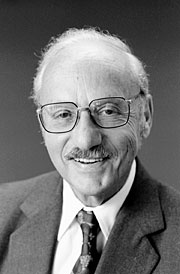Optimization is a powerful approach to driving up the value yield from a scarce and expensive asset. Space is another asset that can be as scarce as equipment and no less contentious: shelf space, space in shipping containers and freight cars, seats in auditoriums and arenas, and space in magazines and newspapers. Take ad space. It is a precious and limited asset, both for businesses needing to reach a target audience and for those who own the media outlet. Allocating ad space in a publication also represents a decision that has to be made over again each time a new edition hits the street, making it a prime candidate for optimization.
The Optimization Edge
A Blog for Business Executives and Advanced Analytics Practitioners
Technologies: Data Science, Big Data, Optimization, Machine Learning, Artificial Intelligence, Predictive Analytics, Forecasting
Applications: Operations, Supply Chain, Finance, Health Care, Workforce, Sales and Marketing


For successful implementation, it is critical to understand how data feeds the optimization system.
There are two sources of data. The first is automatic feeds. I have been involved in building systems where one database is feeding another database, which is feeding another database, and eventually it feeds the model that you have. What happens if somebody changes that middle database? Suddenly, some of those assumptions can change and the data doesn't look the same or doesn't satisfy the same characteristics.

Optimizers look for opportunities, even as resources become more constrained. Rather than asking, “How can we reduce costs?” optimizers attack a business challenge by taking a long, hard look at each step of an operation and asking, “What is the best way of doing this? How can we add value by getting more from the assets that are available to us?” In other words, “How can we optimize?” Instead of looking to “take away” or impose limits, optimizers look for ways to open up infinite opportunities.
An excellent example of how this shift in mind-set works can be found in a company’s call center. When it comes to customer-service calls, the command from management is typically, “Cut call-center costs.” But an optimizer, looking at call-center operations, would suggest a very different mandate. To a quant, the objective becomes, “Optimize the way that customer-service calls are handled.”

As another school year begins, I thought it worth revisiting the snapshot survey Princeton Consultants conducted at the INFORMS Annual Meeting in Philadelphia in 2015. We asked advanced analytics professors, students and practitioners about tools and approaches. The survey was designed to compare the responses of these three groups about optimization solvers and modeling languages, programming languages, and software development.
The key findings in 2015 were as follows:
• Students must learn more about building applications with modern technologies so they have the skills needed by the practice community. Practitioners valued: building web server-based applications; building applications to be deployed on the cloud; building browser-based applications; and building console-based applications.

I often hear analytics as just one pod, but I really think there are two types. One I call “analytics at rest” and the other “analytics in motion.”
Analytics at rest means using analytics to make strategic decisions, investments, and policy changes. Rather than going around a conference room, referencing PowerPoint decks, and polling executives, leadership uses analytics to make those decisions.
In analytics in motion, we optimize the continual decisions at an organization, both on the buy and sell side, that are made every day. At a trucking company, for example, that means where to place a load, whether to aggregate loads and move them via truckload, which mode to use, which customer to serve, which pilot or driver to assign, where to pick up next, when to hold, and when to go. That’s analytics in motion.

In 2001 I interviewed George Dantzig, the father of linear programming, as part of a project that ILOG was doing at the time to capture the reminiscences of the recipients of the Founders Award from the Mathematical Programming Society (see page 2 of Optima 65 for a picture). Recently, the interviews were converted and transcribed for the Oral Histories project at INFORMS. You can view the complete video interview and transcript at the INFORMS webpage here.

Really Valuable Time
Optimization practitioners know it is not time that is valuable—it is contiguous time. Having a large chunk of time—a solid one-hour or two-hour block—is much more valuable than the same number of minutes in two-minute chunks.

A leading trucking company sought to improve a core business unit by integrating advanced analytics into planning and operations processes. The company retained Princeton Consultants to demonstrate how incorporating new data sources, improved algorithms and a corresponding shift in business processes will result in better economics, service, nimbleness, consistency, and transparency.
Princeton Consultants interviewed key personnel involved in the company’s operations, including business process owners, dispatchers, and information technology personnel. These discussions uncovered the key internal and external factors that determine the dispatch decision process, and revealed an inordinate amount of manual labor that was taxing the planning team and resulting in errors.

Optimizing Inventory Management
Some industries are really good at certain things. Maybe you [CPAs] can talk to client business executives and say, “You know, in the Grocery industry they have 20,000 SKUs and a profit margin of only 3%, so they better understand how to move product, a lot of which spoils, and be really on the money in terms of inventory management.”

In 2016 I conducted a survey at the INFORMS Analytics conference in Orlando on the organization of analytics groups, and on the potential impact of current trends in the analytics landscape. ORMS Today included the summary of the results and the editor Peter Horner, added the title, “O.R. and Data Science: a Complicated Relationship,” which encapsulates a longstanding challenge that is not going away.
Advanced analytics practitioners and business executives are always striving to understand the nature of the problems facing them, so they can hire and manage talent and develop the best solutions. Seems straightforward enough, but technologies, methodologies and terminologies are evolving.
The same professional can have a job title that includes either Operations Research (O.R.), Analytics, or Data Science. Conversely, these labels at times represent three very different communities.
